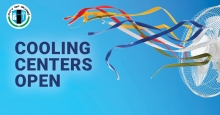Orange County Great Park Board meetings occur on the fourth Tuesday of every month.
Orange County Great Park Board meetings occur on the fourth Tuesday of every month.
Orange County Great Park Board meetings occur on the fourth Tuesday of every month.
Irvine Ranch Water District, partnering with the City of Irvine, invites the community from 9 a.m.-1 p.m. Saturday, September 12 to an expo on water conservation. Free event, no RSVP. Attend for
The National Weather Service is forecasting elevated temperatures for Orange County areas Thursday, August 21, through Saturday, August 23. City of Irvine cooling centers are open to provide a safe,
Wednesday, August 12, 2015
IRVINE, CA (Aug. 12, 2015): The U.S. Department of Energy Solar Decathlon returns to the Orange County Great Park for its 2015 competition, to be held October 8-11 and October 15-18 from 11 a.m. to 7
Wednesday, August 12, 2015
IRVINE, CA (August 12, 2015): After a nationwide recruitment, the City of Irvine has appointed J. Kevin Hertell manager of the Irvine Animal Care Center. Hertell comes to the City with more than 30
Celebrate summer by adding a new best friend at half the price! Longest residents are half off on Sunday; male dogs on Monday, all dogs on Wednesday; Terriers on Thursday; female dogs on Friday; and longest residents again on Saturday. (Closed on Tuesday.)

The Irvine Animal Care Center is excited to be participating in the NBC4 and Telemundo52 adoption promotion, Clear the Shelters on Saturday, August 15, 2015. During this event, the Center will be open from 7 a.m. to 6 p.m. All adoptions will be $20.

Click here to view meeting agendas.


